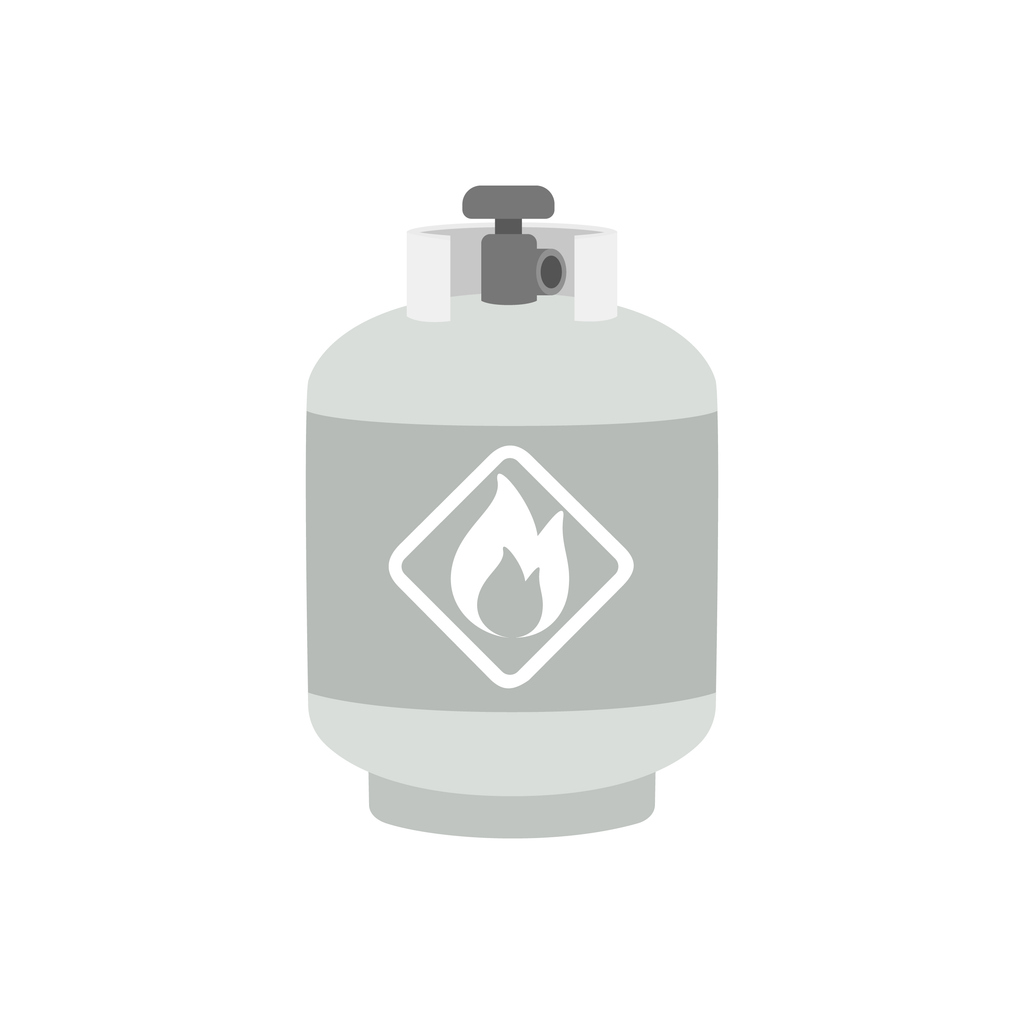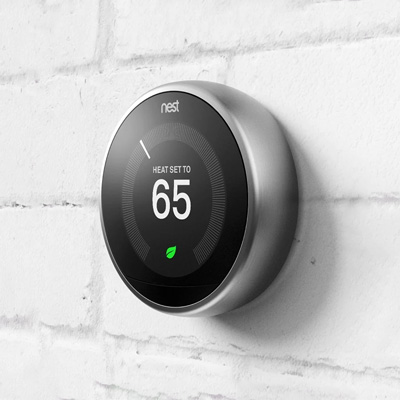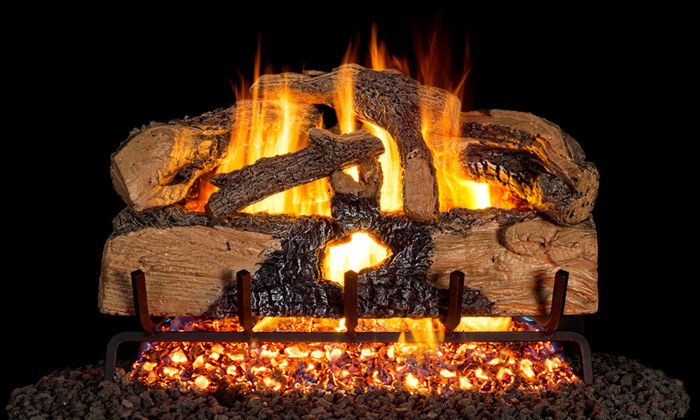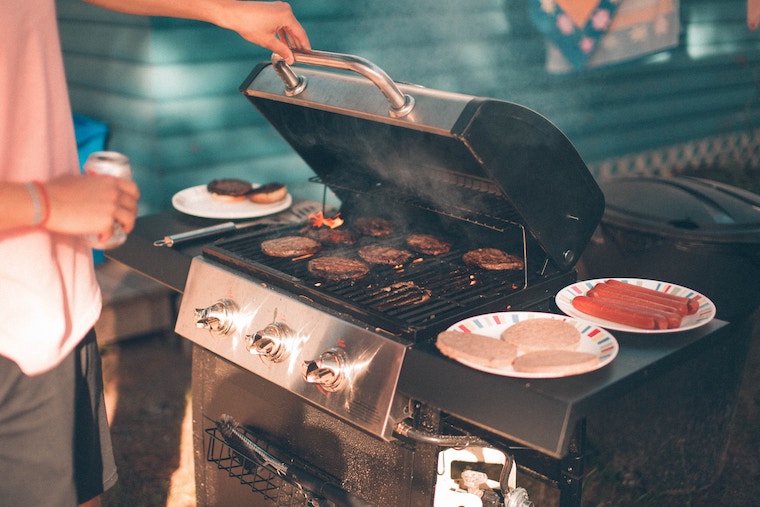
Gas-fired pool heaters, renowned for their efficiency and reliability, continue to reign as the preferred choice for pool owners across the country. In this comprehensive guide, we’ll delve into the workings of propane pool heaters, explore their benefits, and offer practical insights for maximizing their performance during the summer months.
Gas pool heaters, fueled by either natural gas or propane, operate by harnessing the power of combustion to generate heat for your pool. Here’s a breakdown of their functioning:
When it comes to dependable propane delivery, Santa Energy can’t be beat! Become a customer today.

Propane, the versatile and efficient fuel used in over 14 million households across the United States, offers a myriad of benefits that make it a top choice for heating, cooling, and powering homes. Let’s explore six key advantages of propane and delve into practical tips for monitoring usage during the spring and summer months.
As warmer weather approaches, it’s essential to monitor propane usage to manage costs effectively. Here’s how to calculate and optimize your propane usage during the spring and summer months:
By understanding the benefits of propane and implementing practical usage strategies, homeowners can maximize comfort, efficiency, and cost savings throughout the spring and summer seasons.
At Santa Energy, we’re committed to helping you manage your propane costs effectively. Explore our pricing and payment options, including Budget Plans and AutoPay, to streamline your propane expenses and enjoy peace of mind year-round.

In the era of smart homes, the synergy between heating oil heat pumps (also known as mini splits) and smart thermostats is revolutionizing the way we manage and experience home comfort. Learn about the various ways these two technologies seamlessly integrate, offering homeowners unprecedented control, energy efficiency, and personalized comfort.
1. Remote Accessibility:
One of the primary advantages of integrating heating oil heat pumps with smart thermostats is the ability to control your home’s heating system remotely. Whether you’re at work, on vacation, or simply in another room, smart thermostats provide a user-friendly interface through which you can adjust temperature settings using your smartphone or other connected devices.
2. Programmable Schedules for Efficiency:
Smart thermostats empower homeowners with the ability to create personalized heating schedules tailored to their daily routines. Imagine waking up to a warm home in the morning, having the system automatically lower temperatures when the house is empty during work hours, and returning to a cozy ambiance in the evening. These programmable features optimize energy usage, resulting in increased efficiency and reduced utility costs.
3. Adaptive Learning Algorithms:
Modern smart thermostats equipped with adaptive learning algorithms take the guesswork out of temperature control. They learn your preferences over time, analyzing patterns in your behavior and adjusting heating oil heat pump settings accordingly. This not only enhances comfort but also contributes to significant energy savings as the system becomes finely tuned to your lifestyle.
4. Voice Control and Integration with Virtual Assistants:
The integration of heating oil heat pumps with smart thermostats often extends to popular virtual assistants like Amazon Alexa, Google Assistant, and Apple HomeKit. This allows for seamless voice control, enabling you to adjust temperature settings and access other heating system features through simple voice commands.
5. Energy Usage Insights:
Smart thermostats provide valuable insights into your home’s energy consumption patterns. By tracking usage data and offering detailed reports, homeowners gain a better understanding of how their heating oil heat pump operates. This information can inform decisions to further optimize energy usage and enhance overall efficiency.
6. Geo-Fencing Technology:
Take advantage of geo-fencing technology integrated into many smart thermostats. This feature detects when you are approaching or leaving your home, automatically adjusting the temperature to optimize comfort and energy efficiency based on your proximity.
7. Smart Integrations for Whole-Home Control:
The integration of heating oil heat pumps with smart thermostats often extends to broader smart home ecosystems. This means you can coordinate heating settings with other connected devices such as smart lighting, security systems, and even window shades for a comprehensive and synchronized home environment.
The marriage of heating oil heat pumps and smart thermostats marks a significant leap forward in home comfort and energy management. With remote accessibility, programmable schedules, voice control, adaptive learning, and other smart features, homeowners can enjoy a level of control and efficiency that aligns with the demands of modern living. Elevate your home comfort experience by embracing the harmonious integration of heating oil heat pumps and smart thermostats. Contact us to get a quote on a heating pump and smart thermostat installation today!

When it comes to heating your home, the choice between a wood fireplace and a gas fireplace can significantly impact not just your comfort but also your wallet. Let’s explore why gas fireplaces stand out as the more economical and cost-effective option:
1. Fuel Costs:
Gas prices tend to be more stable and predictable compared to the fluctuating costs of wood. With a gas fireplace, you have better control over your fuel expenses, providing budgetary consistency throughout the heating season.
2. Efficiency and Heat Output:
Gas fireplaces are designed with efficiency in mind. Unlike wood-burning fireplaces, where a significant amount of heat can be lost through the chimney, gas fireplaces convert a higher percentage of fuel into usable heat. This efficiency translates to more warmth for your home and fewer wasted resources.
3. Maintenance and Clean-Up:
Wood fireplaces demand substantial time and effort for maintenance. From sourcing and storing wood to cleaning ash and soot, the labor-intensive nature of wood-burning can add up in terms of both time and money. Gas fireplaces, on the other hand, require minimal maintenance, allowing you to enjoy the warmth without the constant upkeep.
4. Long-Term Cost Savings:
While the initial installation cost of a gas fireplace may be an investment, the long-term savings in fuel costs and maintenance can outweigh the upfront expenditure. Additionally, the increased efficiency of gas fireplaces contributes to overall energy conservation, aligning with sustainable and cost-effective practices.
5. Eco-Friendly:
Gas fireplaces are known for their cleaner combustion compared to wood-burning counterparts. The reduced emissions not only contribute to a healthier environment but also often comply with strict local regulations, avoiding potential fines and penalties associated with non-compliance.
By choosing a gas fireplace, you’re not just investing in comfort; you’re making a smart economic decision. Experience the warmth, convenience, and long-term cost savings that come with the efficiency of gas fireplaces. Ready to upgrade your heating solution? Contact us today to explore the economical advantages of gas fireplaces and discover how you can enhance both your home and your savings.
 Propane, also known as liquified petroleum gas, or LPG, is a compressed gas stored as a liquid. In addition to being non-toxic, colorless, and odorless, it’s an “approved clean fuel listed in the 1990 Clean Air Act.”
Propane, also known as liquified petroleum gas, or LPG, is a compressed gas stored as a liquid. In addition to being non-toxic, colorless, and odorless, it’s an “approved clean fuel listed in the 1990 Clean Air Act.”
Besides being cleaner and better for the environment than natural gas, propane provides greater flexibility, is reliable, and is safer to use.
Many homes around the country heat their home in the winter using propane, and now we want to talk about the ways this fuel can power your home in the summer, too.
Being able to grill outdoors is one of the special perks of a New England summer. There’s nothing like food fresh off the grill. With a propane-powered grill, there’s no waiting for charcoal to heat up, you have a more even distribution of heat while cooking, and they are much faster when it comes to clean-up. The other benefit of grilling outside on your propane grill is lower energy costs, and you’re not heating your house up during the hot summer nights.
There’s something so magical about warm summer nights when everyone is hanging out on the patio, and the warm glow from the outdoor lights creates an enchanting feel to the evening. Propane tiki torches, or fire torches, are a safe, pretty way to bring ambiance to your backyard. Just be prepared to host backyard parties where no one wants to leave at the end of the night!
Summer nights under the stars can only be ruined by one thing: pesky mosquitoes. Did you know propane mosquito traps are great ways to trap and kill mosquitoes while you’re outside? They are self-contained and use the same signals that the bugs use to find their human victims: heat, carbon dioxide, and water vapor. Propane traps create all three. A catalytic converter changes the propane into carbon dioxide and can catch thousands of mosquitoes in a week.
Propane heaters are a great way to heat not only your patio, but also your pool, spa, or hot tub. They ensure your midnight dip in the pool is always at the right temperature, and they conserve energy, all while saving you money. For any impromptu swims or hot tub parties, propane heaters will heat your water to the perfect temperature more quickly.
Patio heaters can help turn your patio into a three-season feature, rather than a one-season amenity. As opposed to electric heaters, propane-powered heaters are more efficient and cleaner for the environment. They not only can keep your family warm when summer nights start to get a little chilly, but they are also safer than wood-burning fires and electric heating appliances.
The same weather that gives us those warm summer nights also gives us those massive and often destructive summer thunderstorms. When the power goes out, a propane-powered generator will ensure your house still has power. And unlike gas-powered generators, you won’t have to worry about whether the power outage has affected gas pumps. Depending on the generator, you may be able to power your entire house, including your air conditioning unit, and your home security system.
If you are already using propane to heat your home in the winter, it makes sense to use propane to power other appliances in your house, too. Not only does it save money, but it saves you energy when you use propane to run your stove, water heater, or clothes dryer. Did you know that propane appliances can produce twice as much energy as an electric appliance, in the exact same timeframe? In addition to being more cost-friendly and energy-efficient, propane appliances won’t stop working when the power goes out during those summer storms.
Need to know how long your propane tank will last with each of these unique summer uses? Read our blog posts ‘Propane 101: How long does a propane tank last?’ and ‘How to Read a Propane Tank Gauge (With Examples)’. Or, schedule automatic propane deliveries from Santa, so you never run out!
 Propane is used in more than 14 million households in the United States. It’s become one of the most common fuels for heating and cooling homes because it’s clean, efficient, environmentally-friendly and versatile.
Propane is used in more than 14 million households in the United States. It’s become one of the most common fuels for heating and cooling homes because it’s clean, efficient, environmentally-friendly and versatile.
Additionally, propane is one of the safest fuels homeowners can use to heat and cool their homes. Let’s dive into each of the benefits of propane.
One of the factors that contribute to propane’s cost-effectiveness and broad use is the fact that 80-90% of the propane used in the United States is produced on domestic soil. Domestic propane cuts transportation costs, makes it easier for homeowners to obtain, and translates into a less expensive product for consumers.
With plentiful supply and ever-growing infrastructure in the U.S. to keep up with the demand for propane, there is enough propane to meet America’s needs well into the 21st century.
Propane is an excellent way for homeowners to reduce their carbon footprint. Actually, its listed as a clean fuel in the 1990 Clean Air Act, and Energy Policy of 1992.
Compared to natural gas, propane has:
The largest component of natural gas, methane (87%), is 70 times more potent than carbon dioxide when it comes to trapping and holding heat.
Propane is a non-toxic, nonpoisonous fuel that will not create an environmental hazard if it’s released as a liquid or vapor into soil or water. Because of this, propane tanks can be installed underground without any worry of contaminating the soil.
Because it is a clean fuel, homeowners that rely on propane are actually protecting their appliances from untimely maintenance.
Sulfur dioxide and particulates are created from burning dirty fuels like gasoline and diesel. By burning dirty fuels, you’re creating soot and scaling in appliances, which can cause an increased need for maintenance.
On the other hand, by burning a clean fuel like propane, you’re decreasing the amount of soot and scaling on your appliances, which decreases the need for maintenance. Clean burning also increases heating efficiency and makes for appliances that run better, longer.
Another reason propane has become a dominant heating source for many American households is due to its versatility. Virtually anything in your house, restaurant or building that can run on electricity or natural gas can run on propane, specifically:
One of the biggest problems for homeowners who want natural gas is its inconvenience. Homes that aren’t already equipped for natural gas can expect to pay $10,000-$20,000 to bring natural gas piping into their home. And, not every location in the U.S. can get natural gas easily, which can make its reach limiting.
With about 70,000 miles of interstate pipelines, propane, on the other hand, is readily available to almost everyone in the country. Many propane companies will also provide scheduled deliveries, so once you’re running low, you can automatically get a top off without worrying about running out of fuel. Portable storage tanks make it easy to have propane accessible for use at all times, even if you’re not at home.
Propane tanks are environmentally friendly, require little maintenance, are easy to install, and can last more than 10 years with proper maintenance.
A propane-fueled home is less costly to operate than an electric home, or a household run on natural gas.
For example, did you know that propane water heaters can produce twice as much hot water as electric units–in the same amount of time? That efficiency equals cost savings. Specifically, the U.S. Department of Energy, says that homeowners that heat water with propane rather than electricity save $175 each year.
When it comes to natural gas, even though consumers pay a higher price per unit for propane ($26.99 per gallon) than natural gas ($6.23 per cubic foot) by volume, propane is more efficient than natural gas, which means it lasts longer.
One cubic foot of propane equals 2,516 BTUs, while one cubic foot of natural gas equals 1,030 BTUs. In other words, propane provides more than twice the energy of natural gas, which makes it a far less expensive alternative to natural gas because you get more for your buck.
Most importantly, propane has a solid safety record. The National Fire Protection Association (NFPA) has imparted stringent codes and regulations to ensure it’s safety. That means, a home outfitted for propane is clean, efficient, environmentally-friendly and also a fuel you can count on to keep your home and family safe.
When it comes to entertaining guests or gathering your family together, nothing feels cozier than nestling around an outdoor kitchen. And, by building one on your own, you can not only make that dream come true but also save a boatload of money.
If you’re researching DIY outdoor kitchen spaces, here are the three ‘F’s’ for you to consider: Frame, finish and fuel.
When building a DIY outdoor kitchen, you’ll start with the frame. Before determining the type of structure you want to build, consider the durability of the materials, what level of difficulty the material is to work with, the tools you’ll need for proper assembly, and the overall cost for a frame.
Here are three different options for frames, and the benefits and drawbacks of each of them.
Benefits of Using a Wood Frame
Wood is the most cost-effective framing option (at least initially, more on this later). Pressure-treated pine is the most common option for outdoor kitchens. This option ranges in price from $3-$10 per square foot, depending on the quality and your geographic location.
Wood is also easy to work with, which means a frame can be assembled by someone with little to no building experience. Lastly, it’s simple to add backing to a wood frame, allowing you to add accent designs and finishes, like stone, tile or granite to get the final look you want.
Disadvantages of Using a Wood Frame
Keep in mind, wood is meant to burn. That means, if you use wood for your DIY outdoor kitchen, you’ll need to add fire resistant coating and an insulated jacket to decrease the risk of fire. Though wood is inexpensive upfront, the upkeep can become costly. Wood is more susceptible to damage. To start, bugs and insects can eat away at the wood. Mother Nature can be rough on wood, too. Without the proper coating, wood can rot, making for a less stable outdoor kitchen over the years.
Benefits of Using a Brick Frame
Brick is a classic look, made from durable material, and is one of the most popular styles for an outdoor kitchen. Because brick is a timeless style, you don’t need to add materials to make the outer-facing wall more attractive, the framing can blend nicely into the beautiful exterior. Unlike wood, brick is weather and fire resistant, making it a safer long-term investment.
Disadvantages of Using a Brick Frame
Because it’s quality material, you can expect to pay more for brick than wood (ranging between $1-7 per square foot). To assemble a brick frame, you’ll also need more tools than if you worked with wood. For example, a trowel and level will be required to build your kitchen. As you might guess, brick and cinder blocks are more complicated to work with than wood, which means you’ll need some experience to assemble a frame with these materials.
Benefits of Using a Steel Frame
Steel is one of the most durable materials you can use for a DIY outdoor kitchen as it can hold up against a wide range of weather elements. Because steel is an incredibly sturdy material, you can do more with less. In other words, when designed correctly, a steel frame can provide the support you need with a minimal amount of material for the frame. Steel ranges from $67 – $95 per square foot, which seems expensive, but because you can use less of it to build, it can be a cost-effective method for building, especially compared to brick.
Additionally, steel is renewable and recyclable, making it an eco-friendly material.
Disadvantages of Using a Steel Frame
Unfortunately, working with steel is not for beginners. Of all the materials listed above, steel is the most difficult to work with. To assemble, you’ll need to rivet and bolt the material to a concrete slab, which requires both expertise and specialized tools. Finally, if you live in a humid area, steel can get very moist and will eventually corrode, so you’ll also need to add special coatings of anti-corrosives during construction.
After completing your frame, it’s time to select finishes. If you use a wooden frame, it’s wise to add water-and-mold-resistant concrete boards to the frame to support the structure and also provides you a foundation to add decorative panels like stucco, tile, and stone.
But, regardless of your frame, here are some of the most popular finishes for well-designed DIY outdoor kitchens.
Granite is an excellent option for a sleek contemporary finish and goes well with wood. However, it’s important to note that granite is more prone to staining than the other finishing options listed below.
Price Range: $45 – $200 per square foot
Stainless steel is known for its durability, which means your outdoor kitchen will last a long time. And, stainless steel is easy to clean and maintain.
Price Range: $67 – $95 per square foot
Stucco is a great option for a finish because it’s inexpensive, naturally resistant to fire, and is a durable material that requires little maintenance. However, if you live in a particularly wet climate, moisture can be a problem for stucco.
Price Range: $6 – $9 per square foot
Stone looks great on an outdoor kitchen because it easily blends into the natural elements surrounding your home. However, stone can be challenging to work with, so if you want a stone finish in your outdoor kitchen, it might be best to work with a professional. While real stone veneers can be pricey, manufactured stone is a great alternative as it looks the same, but can be purchased at a fraction of the cost.
Price Range: $12-$ 17 per square foot
Tile is a nice choice for crafty DIYers who want a wide variety of colors and style to play with. However, tiles are fragile, so you might think twice about adorning your outdoor kitchen with this material if you live in an area will extreme climate switches.
Price Range: $2-$7 per square foot
Concrete is a great way to add a modern finish to your outdoor kitchen. It’s cost-effective and visually appealing but will require a bit of extra maintenance. Concrete should be sealed and resealed annually to prevent cracking.
Price Range: $1-$2 per square foot
Once your frame has been built, and finishes have been added, you’ll need to add fuel to your outdoor kitchen. The most comprehensive fueling options for outdoor kitchens are natural gas and propane.
Though both fuels are eco-friendly, propane has a few benefits you should consider:
Not to mention, die-hard grillers know that a propane grill makes for a better taste to your food as well.
Are you ready to start building? Here are some great resources we’ve found to help you get started:

(Photo/Pexels)
To enjoy the benefits of propane, you must equip your home with a propane tank. To ensure you’re storing and securing your propane tank adequately, federal, state and local ordinances govern installing, dispensing and refilling propane tanks properly.
Follow this guide to discover what you need to know about the policies regulating your home’s propane tank.
The primary considerations you should know are how far a propane tank needs to be away from houses, buildings, driveways, awnings, and property lines to ensure legal and safe placement of your above or underground propane tank.
These placement regulations will vary based on the size of your propane tank.
These tanks are most often used to power cooking ranges, indoor fireplaces, or other small appliances. They are also portable. Still, when placing a 100-pound propane tank on your property, you must adhere to the following requirements:
A 100-gallon propane tank does well with equipment that requires substantial power but isn’t used every day. For example, you may use it for an emergency generator or heating outdoor swimming pools. When placing a 100-gallon propane tank on your property, keep these measurements in mind:
Additionally, four (or fewer) 100-gallon tanks can be placed next to each other on a single property as long as placement restrictions are adhered to.
This size tank is the most common for residential propane use as it’s suitable for home heating, running everyday appliances, powering generators, and more. With a larger tank, you won’t need to bother with as many refills, but need to adhere to additional requirements during installation:
If you have a large home, like over 4,500 square feet, a 1000-gallon propane tank is your best bet for keeping your home heat running and your everyday appliances in operation. 1,000-gallon tanks are also common for agricultural purposes. For this size tank, distance measurements are as follows:
If two, 1000-gallon tanks are placed within 3 feet of each other, each of the above clearance requirements increases to 25 feet.
If these numbers seem confusing, don’t fret. Top propane companies and professionals will know, and explain the propane tank distance requirements you must abide by when installing a propane tank on your property.
In addition to clearance requirements, underground tanks need to adhere to depth guidelines, which are defined in the LP Gas Code (NFPA 58). These measurements are as follows:
Before the propane tank installation process, you’ll need to consider the clearance and depth guidelines.
The answers to these questions will inevitably help you decide the best placement of your propane tank.
But, you’ll also need to factor in other systems in your home so when it comes time installation, you don’t disturb existing work:
Once the installation of your propane tank is complete, the safety protocols continue. Specifically, upon each refill, your propane tank will need to be inspected for rusting, pitting, and structural integrity. In Connecticut, it may also be required to conduct survey readings, records audited and spot checks for new construction.
It’s best to work with a propane company who knows your state and county ordinances so that you can ensure proper installation and ongoing use of your propane tank.
 Deciding between propane vs. electric for energizing a home is a debate common for homeowners who want to be both cost-effective and energy-efficient. Though the two energy sources are comparable in many ways, they are distinct in others as well.
Deciding between propane vs. electric for energizing a home is a debate common for homeowners who want to be both cost-effective and energy-efficient. Though the two energy sources are comparable in many ways, they are distinct in others as well.
To start, propane is a primary energy source, whereas electricity is secondary, that is to say, propane can be used ‘as is’ and electricity can only be used once it’s been created by another energy source. This means that it takes more energy to create electricity, which can affect its cleanliness, efficiency and cost. But, how do these variables compare to propane, which your house may or may not already be equipped to utilize?
Below, we compare propane vs. electric to see which is the better source of energy for your home.
To determine the different price points of propane vs. electricity, we first need to do a bit of math.
Propane and electricity are measured in different units:
However, both fuels are calculated on a per hour basis for efficiency and energy consumption, which helps as we convert total energy usage by appliances.
To get both sources of energy on an even calculation playing field, remember these statements:
We’ll use these conversions in a moment to calculate which energy source you should be using in your home.
Determining whether propane is cheaper than electricity depends on several variables like the age of appliances your home operates on and the cost of fuel and electricity in your area. But, in this section, we’ll cover how you can calculate the total cost of both energy sources, and show you how energy-efficient appliances can impact your total costs.
Comparing the cost of propane to electric head-to-head, is simple.
Which is less expensive?
Let’s do an example together:
So in this case, electricity is less expensive than propane by volume because $2.70 is less than $2.94.
The math gets a little more complex when putting the cost up against energy efficiency. Propane is considered an efficient fuel, which means it holds more energy per volume than other sources, which can reduce its overall usage cost.
Let’s review how appliances stack up when it comes to costs comparisons of propane and electricity.
A 100-watt light bulb will consume 1.2 kWh, per day. With propane, it would take roughly .024 gallons (341.21 BTUs/hr.) to light the same lightbulb.
Using the data points we discussed, lighting your home for 12 hours would cost:
Propane is the more cost-effective fuel in this scenario.
If you run a 1300-watt washing machine for 3 hours a day, you can expect to use 3.9 kWh, per day. The same machine would take 0.106 gallons (4435.78 BTUs/hr.).
Using the data points above, using a washing machine for 3 hours costs:
Propane is the more cost-effective fuel in this scenario.
If you run a 2,500-watt heater for 8 hours a day, you can expect to use 20 kWh, per day. The same machine would take 0.068 gallons (8530.3540825 BTUs/hr.).
Using the data points above, using a heater for 8 hours costs:
Propane is the more cost-effective fuel in this scenario, and as you can see, the cost gap between the two energy sources is growing with higher voltage appliances.
Propane is a non-toxic, non-poisonous fuel that burns cleaner than other fuels and produces environmentally-friendly emissions. Additionally, propane will not create an environmental hazard if spilled. For this reason, it’s possible for homeowners to have either an above-ground or underground propane tank without any worry of contamination.
While electricity has zero emissions, that doesn’t mean it’s 100% efficient. Because electricity is a second energy source, as we mentioned earlier, the primary source of energy may be less environmentally-friendly.
In fact, according to The U.S. National Library of Medicine, about 62.7% of electricity generated is from fossil fuels (coal, natural gas, and petroleum), and 30.1% is attributed to coal. And, coal mining accounts for roughly 9% of total U.S. methane emissions and nearly 1% of total U.S. greenhouse gas emissions, according to EIA, which is not environmentally-friendly.
Determining which energy source is best for you will depend on other factors apart from fuel efficiency and environmental impacts. It also depends on its availability in your region, the cost to equip your home for the energy, and your personal preferences.
If you are already equipped with an electric water heater, it might not make sense to convert to propane. Most homeowners save between $150-$200 a year with a propane water heater versus an electric one, but the cost of a new propane water heater could offset the savings for the first couple of years. However, if you purchase high-quality equipment, the cost-savings of switching to a propane water heater will eventually win out.
In short, propane is the most energy efficient of the two grills — and might be better for the taste of your food as well. Most electric grills can cook around 400 degrees, however, they aren’t typically designed to stay at high heats for long periods of time. So, quick meals on an electric grill works, but you may have an overall better experience using a propane option.
Some states give massive rebates to homes that switch from oil to natural heating solutions like electric, which can offset the margin cost differences, and wind up saving you more money in the long-run. There are often stipulations that come with the rebates though, so it’s wise to do your research to see if the options provided by the state make sense for your home. Further, not all regions of the United States have accessibility to both energy sources. Where you live might make your decision for you.
Apart from occasional check-ups to ensure your wiring, circuit breakers, outlets, and plugs are in working order, electric homes have little maintenance to adhere to. Propane requires a bit more observation, as the fuel will run out and the homeowner will need to reorder their supply. Luckily, many propane delivery services will monitor your fuel levels, and schedule automatic deliveries to help reduce the burden of fuel delivery.
Costs vary by region and by the household for both propane and electricity. Historically, propane has given consumers more bang for their buck when compared to electricity, but everyone’s situation will be different. If you want to find out more about propane vs. electricity for your home, contact an expert.

(Photo/Unsplash)
Not having enough propane on hand can be both a burden and a danger. From running out of fuel during the middle of a cookout to not having heating oil on a cold winter’s night, it’s important to know the specifics of propane tank maintenance, how quickly the fuel burns, and how to tell if you’re running low on fuel.
Residential propane tanks range in size from 100-1,000 gallons. Smaller tanks, like 20-pound tanks, are sold for modest needs like outdoor barbecuing or small appliances like fireplaces.
Homes 2,500 square feet or larger, that have multiple appliances running on propane, will most likely use a 500-gallon tank. Propane tanks any larger than 500-gallons are often reserved for commercial use.
How you put your propane to use will play a role in how long your fuel source will last. Consider the most common uses for propane:
As mentioned above, 20-pound propane tanks are used for modest tasks like cooking individual meals. As a rule of thumb, one tank of propane will typically last between 18-20 hours if you’re grilling on a medium-sized grill. Whereas larger grills can burn through 20-pounds of propane in as little as 10 hours.
On average, you’ll use one or two pounds of fuel per meal if you use a medium-sized grill on high heat. That equals roughly 8 grilling sessions per tank.
British Thermal Unit, or BTUs, is the industry standard used to measure the heating efficiency of household appliances. The average home furnace runs on roughly 100,000 BTUs, and one gallon of propane equals 92,000 BTUs. That means the average home furnace burns roughly one gallon of propane per hour.
In this example, a home furnace will burn anywhere from 500-1,200 gallons of propane per year, depending on how often you turn on your furnace.
Your hot water heater usage will vary based on how many bathrooms you have in your home, and how many people are in and out of your home. As a rule of thumb, the average home uses about 1.5 gallons of propane a day for typical hot water heating use.
The average homeowner can expect to use somewhere between 200-300 gallons of propane per year for hot water.
Overall, the average homeowner will use roughly 2.5, 500-gallon tanks of propane each year for home heating and cooking.
For even more customized calculations, you can follow the steps below:
Propane doesn’t expire. So, with its long shelf-life, the only reason you’ll need to order more propane is when you’re running low. Unless your propane delivery service provider monitors your fuel level and delivers to you automatically, you’ll need to learn how to read the gauge on your propane tank.
The most important number to know when reading your gauge is the fuel level. It should never be more than 80% full. The reason is thermal expansion. Keeping your tank filled less than 100% ensures the fuel in your tank can expand with no risk to the tank or your safety.
Once your gauge reads 20%, it’s time to reorder your supply of propane.
Here is a quick video to help you read the gauge on your propane tank:
Large stationary propane tanks need to be recertified 10 years after their date of manufacture and every five years following that. But, as long as your above or underground propane tank was installed correctly and you perform proper maintenance on the tank, and connected appliances, your propane tank will remain suitable for use for decades.
Here’s a quick maintenance checklist:
Santa is known for its reliable delivery and exceptional customer service in Fairfield and New Haven Counties in Connecticut. Santa also offers automatic propane delivery, which means we’ll track the levels of your fuel and send out a new delivery before your supply runs out.